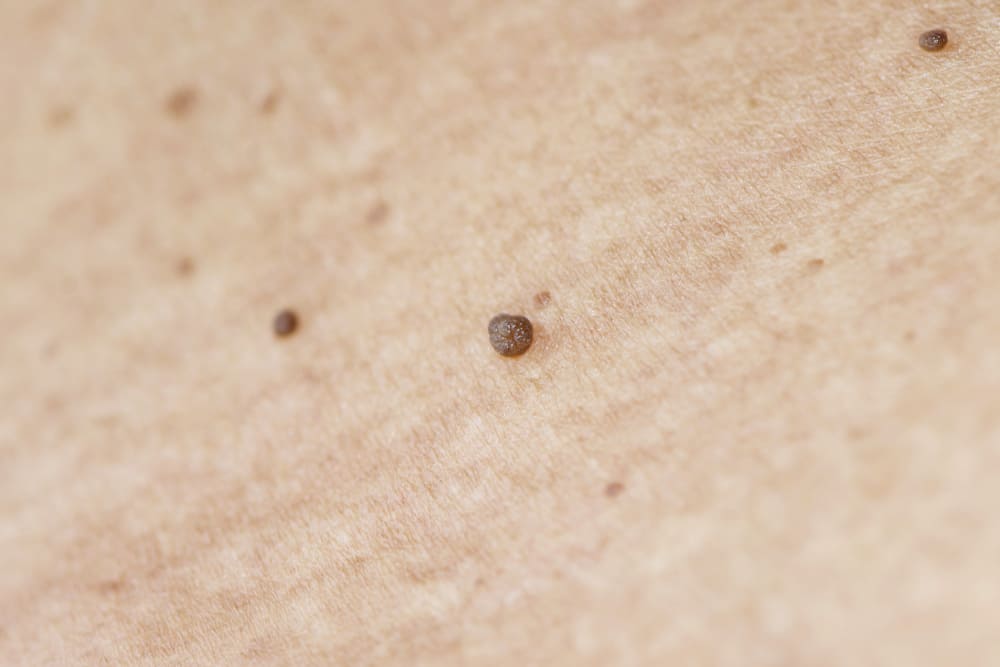A skin tag is a little, floppy patch of skin that hangs from the skin and may have a stalk. They can appear anywhere on the body but are more common in areas like the neck and armpits. Skin tags are quite prevalent and often appear after midlife. Both men and women are equally impacted.
Dr. Sam Speron – a Chicago Plastic Surgeon – describes them as benign, soft, skin-colored growths known medically as acrochordons. They are often mistaken for other benign growths, including flesh-colored moles, neurofibromas, or even warts.
Skin tag locations tend to include the eyelids, neck, armpits, and groin. They often develop in body folds because they tend to prefer places of friction.

Yes, says Dr. Speron, but they may also become worse with hormonal fluctuations and are genetic. People with diabetes and obesity are more likely to develop skin tags as they age. They are also often seen during pregnancy.
Skin tags are harmless, non-cancerous skin lesions. They are composed of nerve cells, fat cells, a covering or epidermis, and a core of fibers and channels. Unless they are in a prominent location or are often touched or scratched, such as by clothes, jewelry, or shaving, they frequently go undetected.
Skin tags may exist and go unnoticed. Sometimes, they rub off or fall off. Large skin tags may rupture when pressed. They may have a smooth or atypically shaped surface. They often protrude from the skin's surface on fleshy stalks called peduncles. They often have a flesh tone or a light brown tint.
Skin tags are not harmful, but they may be bothersome for the patient, mainly if they are in places where they are often touched or caught on necklaces or other jewelry, according to Dr. Libby. "Fibroepithelioma of Pinkus, a specific kind of basal cell carcinoma, may sometimes be mistaken for a skin tag, but your doctor will advise you if the lesion needs to be submitted for further laboratory testing; once it has been removed."

Please refrain from removing skin tags using nail clippers or acid which often incompletely remove the lesions and also result in significantly more scarring. According to Dr. Speron, "We carry out these surgeries under controlled circumstances to minimize consequences like an infection."
If you're looking for a specific procedure, check with your doctor first to see what they offer, as Dr. Speron exclusively performs surgical removal of skin tags at his office for enhanced accuracy. The removal of skin tags usually doesn’t leave a scar.
When I first published The 7 Critical Questions to Ask Before Letting Any Surgeon Touch You, I had no idea that it would be so popularly received. Since its publication, this brief guide has helped thousands like you to more safely navigate the world of cosmetic surgery. The 7 Questions have been updated and a bonus section, Applying the 7 Questions, has just been added. Be my guest to read, learn and share.